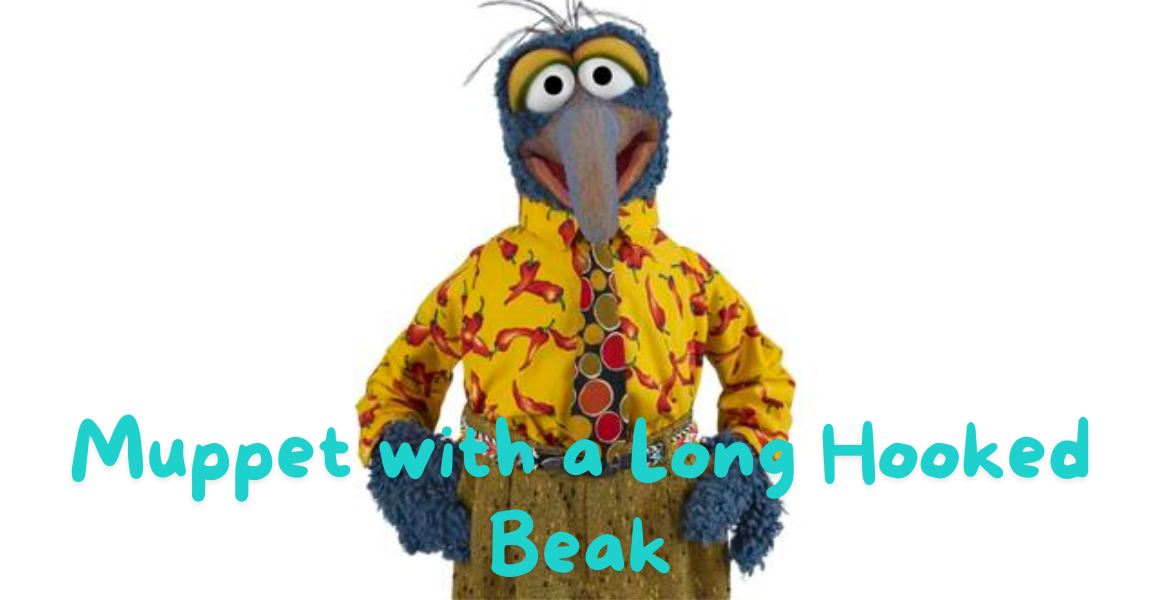The world of Muppets, created by the legendary Jim Henson, is filled with a diverse array of characters that have charmed audiences for decades. Among these colourful personalities, the Muppet with a long hooked beak stands out for its distinctive and memorable appearance. This article explores the history, design, and cultural significance of this unique character, delving into what makes it a beloved part of the Muppet ensemble.
History and Creation
- Inception
-
- The concept of the Muppet with a long hooked beak emerged during the creative boom of “The Muppet Show.”
- The character was designed to add diversity to the Muppet lineup and draw inspiration from avian and fantastical elements.
- Debut
- This Muppet first appeared in the late 1970s on “The Muppet Show.”
- Its distinctive beak and quirky personality quickly made it a fan favourite.
Design and Physical Characteristics
- Distinctive Features
- The character’s most prominent feature is its long, hooked beak, reminiscent of birds of prey or mythical creatures.
- It often has bright, eye-catching colours, enhancing its visual appeal.
- Anatomy
- The Muppet with a long hooked beak typically has large, expressive eyes, which are crucial for conveying emotion and humour.
- Its body is usually slim and agile, complementing its bird-like appearance.
| Characteristic | Description |
| Beak | Long, hooked, and visually dominant |
| Colour Scheme | Bright and contrasting colours (e.g., red, yellow, blue) |
| Eyes | Large and expressive, often exaggerated for comedic effect |
| Body | Slim and agile, enhancing bird-like movement |
Role and Appearances in Muppet Productions
- Recurring Roles
- The Muppet with a long hooked beak regularly appears in various Muppet productions, including sketches and musical numbers.
- It often plays diverse roles, from comedic sidekick to a central character in specific episodes.
- Notable Scenes
- Known for its humorous interactions with other Muppet with a long hooked beak and guest stars.
- Frequently features in memorable musical numbers and skits, showcasing its unique voice and personality.
Popularity and Cultural Impact
- Fan Following
- The character has garnered a dedicated fan base due to its distinctive look and engaging performances.
- It is a popular choice for Muppet merchandise, including toys, clothing, and posters.
- Cultural Significance
- Referenced in various media, from TV shows to movies and online content.
- Represents the creativity and diversity of the Muppet universe.
Comparison with Other Muppet Characters
- Unique Traits
- The long hooked beak sets this Muppet apart from others, emphasising its bird-like characteristics.
- Compared to characters like Gonzo, who also has a distinctive nose, Muppet with a long hooked beak has a different personality and role.
- Similar Characters
- Shares similarities with other avian-inspired Muppets like Big Bird and Sam the Eagle.
- Each character has its own unique features, contributing to the rich diversity of the Muppet ensemble.
| Character | Unique Trait | Similarity to Hooked Beak Muppet |
| Gonzo | Long nose | Both have exaggerated facial features |
| Big Bird | Tall stature | Both are bird-like, but differ in size and color |
| Sam the Eagle | Stern expression | Similar beak shape, different personalities |
Behind the Scenes: Puppeteering and Voice Acting
- Puppeteers
- Initially brought to life by skilled puppeteers known for their work on various Muppet characters.
- The character’s movements and expressions are vital in conveying its personality.
- Voice Actors
- The unique voice, often high-pitched or exaggerated, adds to the Muppets charm with Muppet with a long hooked beak.
- Different voice actors have contributed to the character over the years, each bringing their own interpretation while maintaining consistency.
Conclusion
The Muppet with a long hooked beak is a testament to the imaginative brilliance of Jim Henson and his team. Its distinctive design and engaging personality have cemented its place in the hearts of Muppet fans worldwide. From its early days on “The Muppet Show” to its continued presence in various Muppet media, this character exemplifies the creativity and enduring appeal of the Muppet franchise. The Muppet with a long hooked beak continues to captivate audiences, proving that in the whimsical world of the Muppets, every character has a unique and cherished role.
FAQ’s
What is the Muppet with a long hooked beak?
The Muppet with a long hooked beak is a distinctive character from Jim Henson’s Muppet universe, known for its prominent, bird-like beak and colourful appearance. It frequently appears in various Muppet productions, including “The Muppet Show.”
When did the Muppet with a long hooked beak first appear?
This character first debuted in the late 1970s on “The Muppet Show,” quickly becoming a fan favourite due to its unique design and engaging personality.
Who created the Muppet with a long hooked beak?
The Muppet was created by the talented team of designers and puppeteers at Jim Henson’s workshop, drawing inspiration from birds and mythical creatures.
What materials are used to make the Muppet with a long hooked beak?
The Muppet is crafted from a variety of materials, including fabric, foam, and synthetic fur or feathers, to create its vibrant and expressive look.
What is the role of the Muppet with a long hooked beak in Muppet productions?
This Muppet often appears in comedic sketches, musical numbers, and interactions with guest stars. It plays a variety of roles, from a humorous sidekick to a central character in specific episodes.
Why is the Muppet with a long hooked beak so popular?
The character’s unique design, humorous personality, and memorable performances have garnered a dedicated fan base. Its bright colours and distinctive beak make it visually appealing and easily recognizable.



